
ca. 2004, New Zealand, Pacific — Flock of sheep, New Zealand, Pacific — Image by © Mula Eshet/Robert Harding World Imagery/Corbis
At least 60% of the land surface of Australia is grazed at one time or another by domestic stock, primarily sheep and cattle. This includes grazing of sown pastures in agricultural regions and the extensive grazing within the semi-arid rangelands. These areas, and much of the arid remainder, are also grazed by feral and native animals. Most rural properties (70%) include, or have a boundary with one or more river, stream, creek or gully, even if they flow with surface water only occasionally. It is not surprising therefore, that animals, including domestic stock, are a major influence on riparian areas and riverine systems.
Animal control
Uncontrolled animal access and grazing can be very deleterious to riparian areas. Over-grazing, trampling of plants and prevention of regeneration, introduction of weeds, opening up of bare tracks and pugging of moist soils, large nutrient inputs from dung and urine, and spread of animal parasites and diseases are some of the main problems. Uncontrolled access by stock and other animals is, in many areas, a primary cause of poor and declining condition of riparian areas and streams, and must be tackled first before other rehabilitation works can be successful.
Controlling animals with a physical barrier is effective, but is financially feasible only in agricultural regions where relatively small paddock size and grazing enterprise margins make fencing a practical option. In the inland areas, where paddocks are large, margins low, and animals scattered, alternative means of managing animal behaviour must be considered, for example use and location of alternative watering points, shade, or feed supplements.
Planning and management
Planned and active management of stock in riparian areas can lead to improved productivity and profit as well as environmental benefits. This can be achieved through improved pasture growth and feed utilization, use of riparian areas for shade and shelter at critical times of year or stages in animal life cycles, timing of access to reduce parasite populations, and use of clean, off-stream water to prevent transmission of diseases.
Planning for optimal use of riparian pastures within the context of the whole-farm plan, and ensuring that managers (and not the animals) determine the timing, duration and extent of riparian access and grazing, are the keys to achieving a mix of production and environmental benefits.
Our resource pack contains:
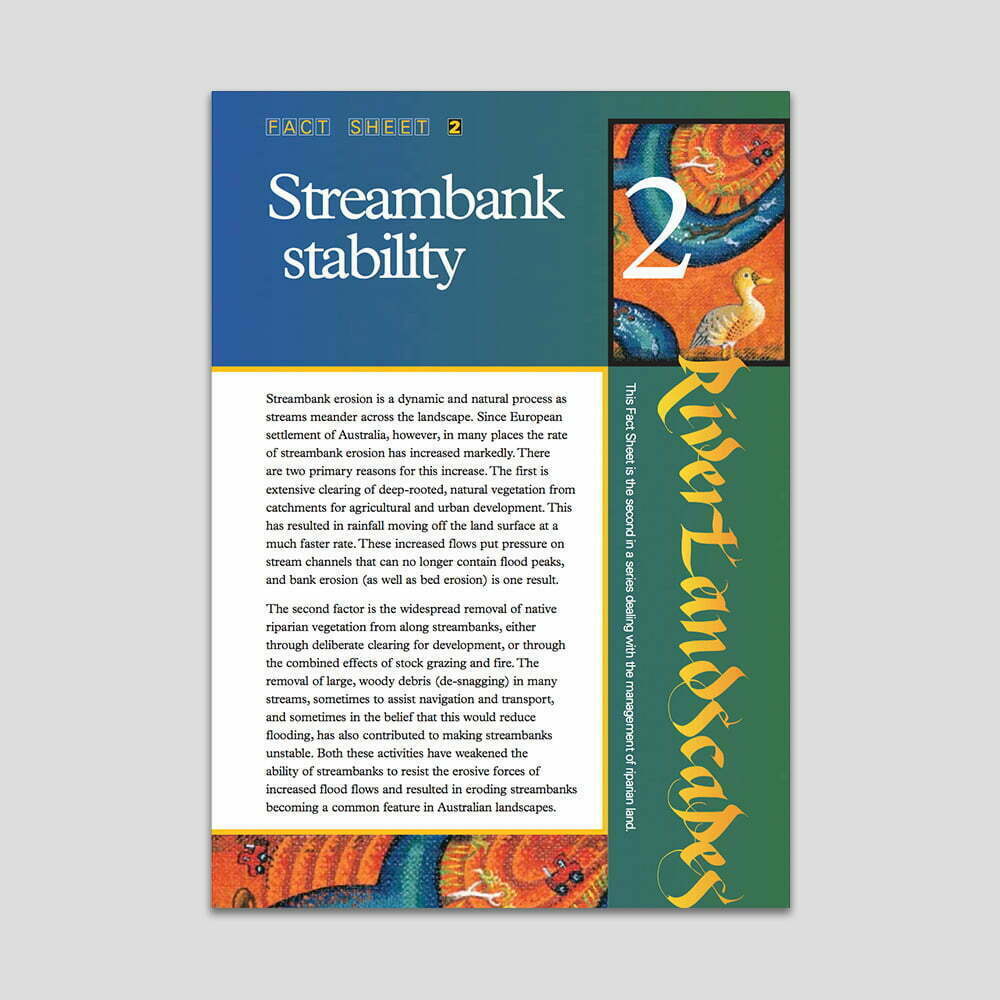
Fact Sheets
Fact Sheet 2 — Streambank Stability
Fact Sheet 3 — Improving Water Quality
Fact Sheet 6 — Managing Stock
Fact Sheet 11 — Managing Phosphorus in Catchments
Fact Sheet 13 — Managing Riparian Widths
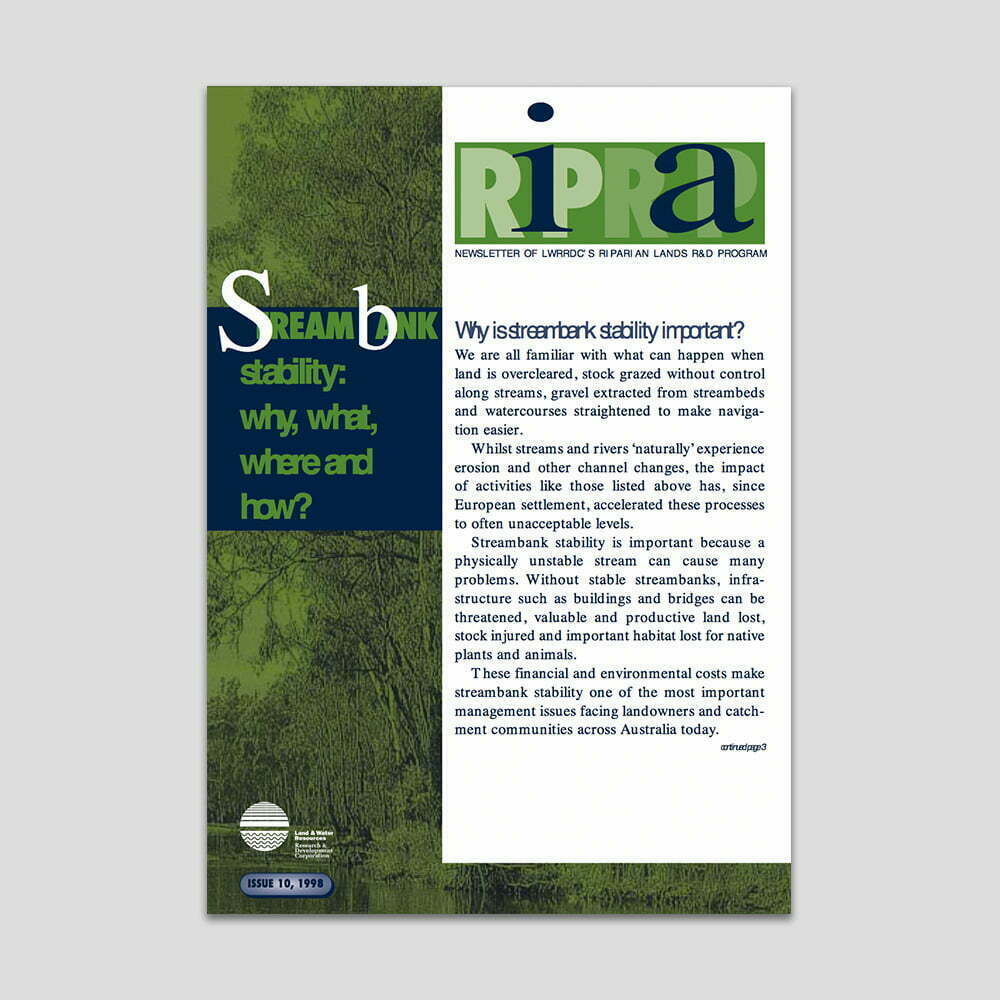
RipRap Magazines
RipRap 10 — Streambank Stability: why, what, where & how?
RipRap 12 — Managing the Riparian Zone within a Total Farm System
RipRap 15 — Seeing is believing: The value of demonstration sites
RipRap 31 — Wrapping up riparian
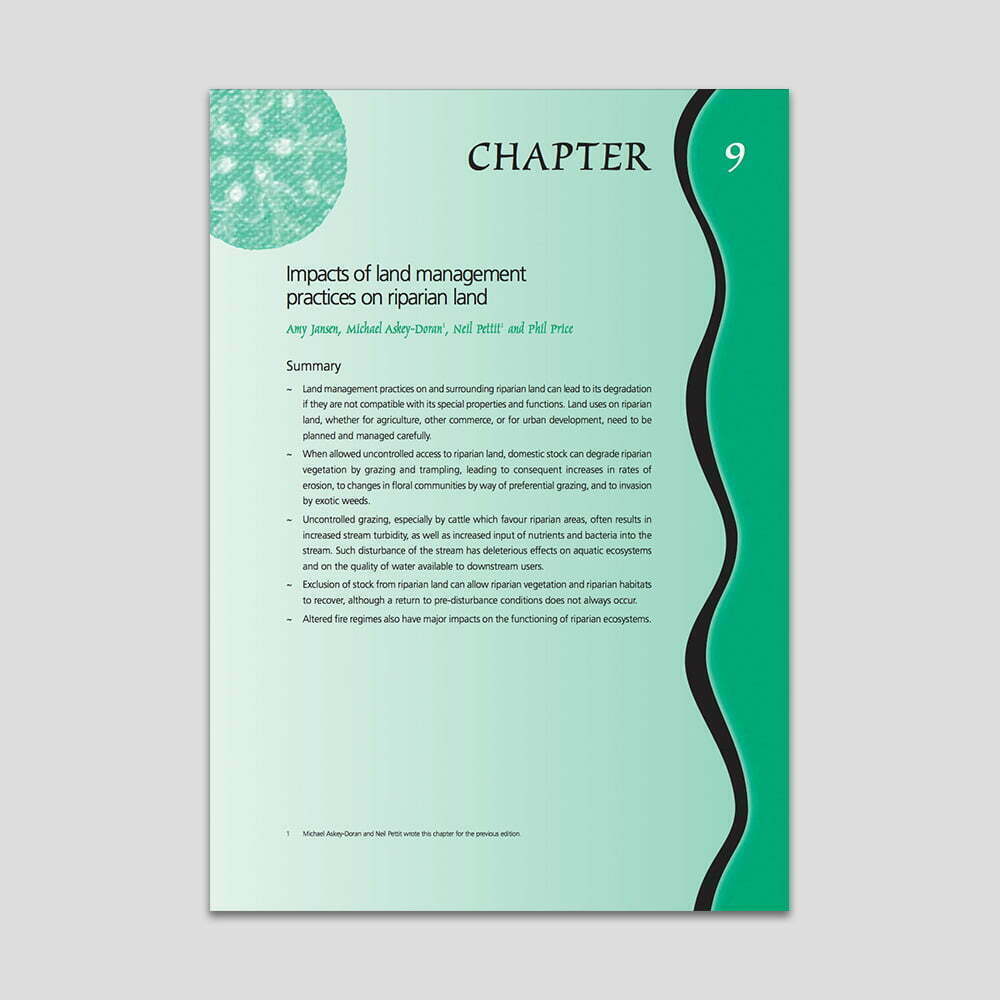
Guidelines
Managing Stock and Waterways: A guideline for managers
Principles for riparian lands management (Chapter 9)
Riparian Land Management Technical Guidelines — Volume One (Chapter 10)
Riparian Land Management Technical Guidelines — Volume Two (Chapter G)
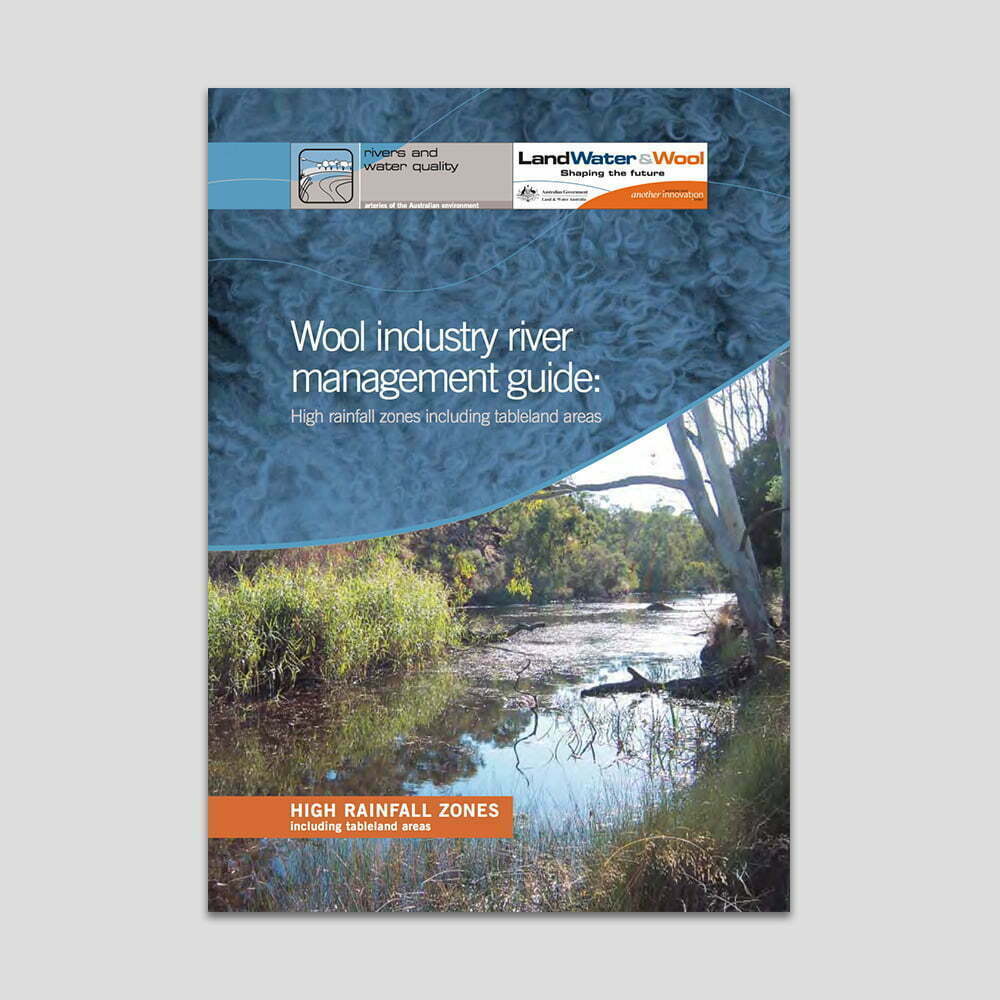
Working with industry
High rainfall zone
Sheep/wheat zone
Managing creeks and waterways in the southern tablelands of New South Wales: a woolgrowers guide
Managing rivers and streams in Tasmania: a woolgrowers guide
Managing creeks and waterways in South Australia: a woolgrowers guide
Preventing creek erosion
Managing weeds in riparian areas
Insights: case studies on how farmers are successfully managing rivers, streams and creeks on wool properties
Are my waterways in good condition?
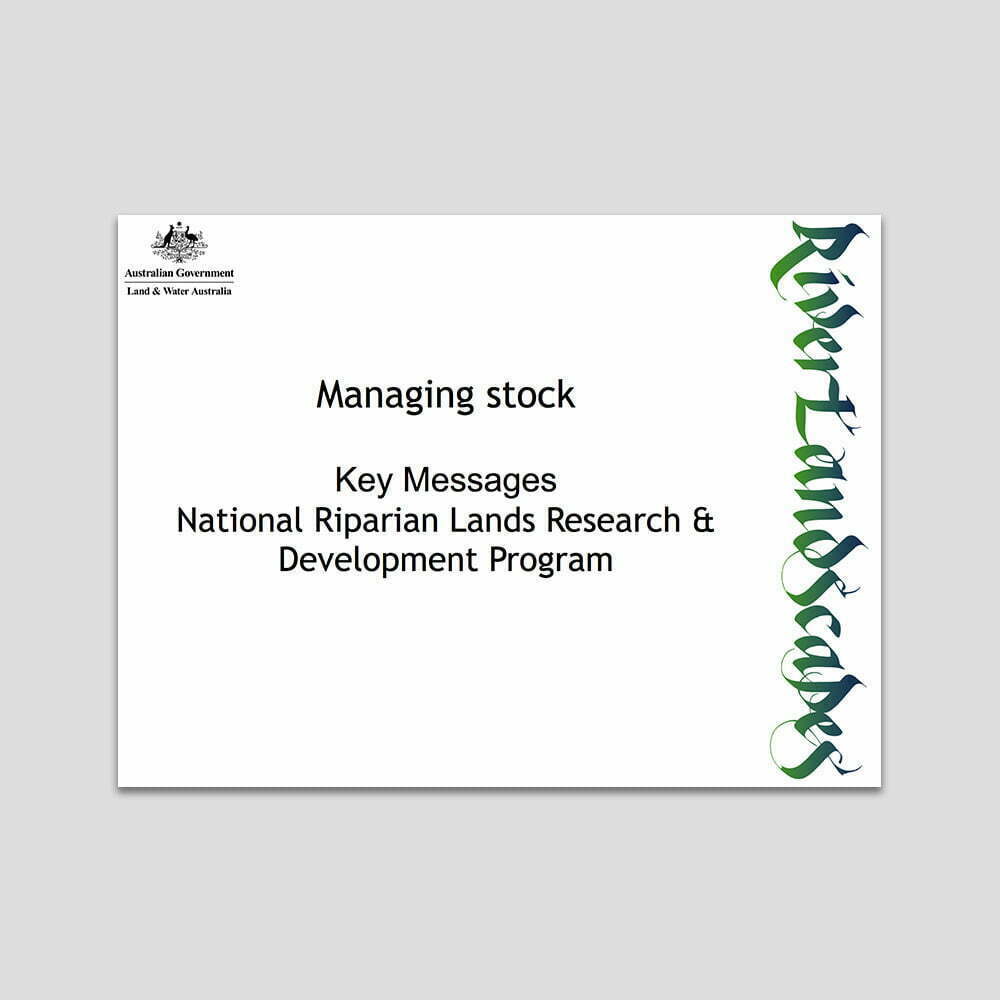
Powerpoint Presentation Template
A powerpoint presentation template you can use to reflect local riparian characteristics, by inserting photos and examples from your region. The powerpoint presentation has notes to accompany each slide, explaining the key point being made and how you might explain it to others.
Download the resource pack.
This resource pack is free but we rely on donations to keep sharing knowledge. Please click on the button below to download the pack, and we encourage you to donate as much or as little as you are able to. Your contribution gives us fuel to build future resources for you and others alike.